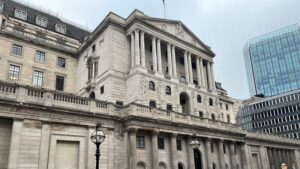It has been a tough 12 months or so for income seekers. The Covid-19 pandemic has forced companies to cancel or defer dividend payments, leaving many investors receiving far lower levels of income than they had expected.
One exception, however, has been investment trust holders, for whom payouts have – for the most part – been maintained. This is no accident. Investment trusts have a well-deserved reputation as a reliable source of income for investors. Many trusts have paid a growing income for decades and consider this an integral part of their long-term investment objectives.
Investment trusts cannot manufacture income where it does not exist, of course, but the structure has some advantages that allow any income generated to be managed more flexibly. Specifically, investment trusts can ‘save for a rainy day’ – retaining up to 15% of the dividends they receive in any given year within a ‘revenue reserve’. This can then be paid out in more difficult years, such as the one we have just experienced.
This matters to investors who need an income from their investments to pay the bills. Research by platform Interactive Investor found just 20% of trusts have cut or suspended dividends this year – a period in which around half of all UK companies have cut payouts. The 11 trusts that have each built up track records of 40 years or more of raising dividends have all said they will keep these records going in 2020.
Investment Association suspended income criteria for open-ended funds
Many trusts have tapped into revenue reserves to support payouts to shareholders. In contrast, for open-ended funds, which are required to pay out all the income they receive, the picture has been very different, to the extent the Investment Association has suspended its income criteria for individual sectors.
“Investment trusts’ ability to reserve income has really shown its value this year,” says Gavin Haynes, investment consultant at Fairview Consulting. “The ability to hold money in reserve for difficult times has seen far fewer investment trusts cut their dividends. Most have been able to maintain, and some even to grow, their dividends this year. The money in reserves is meant for exactly these times.”
The latest statistics from the Association of Investment Companies (AIC) show 19 trusts with a track record of 20 years or more of growing payouts for investors. The City of London trust sits at the top, with a 54-year history of improving dividends for investors annually. It is worth remembering the trust has managed to achieve this through financial crises, tech booms and busts, the gloom of the 1970s and now the pandemic.
Equally, many trusts have built up significant reserves over the years, squirrelling away part of their income year after year. Again, according to AIC data, 25 trusts could cover their annual dividend twice over. Many have tapped into those reserves in 2020 but will start rebuilding again next year.
Other tools in the box: gearing, derivatives and distributions from capital
Reserving income is not the only tool at an investment trust manager’s disposal. Gearing is another way trusts can boost the level of income they pay to investors. Gearing is usually decided by the board of directors, who will also determine whether that income is used to boost capital growth or income. Some trusts use the gearing to invest in fixed income. This should cover the cost of the debt and provide a reliable income on top.
While it is not exclusive to investment trusts, collective funds can also use derivatives to boost their income. This may sound high-risk but, in practice, it simply swaps some of the capital growth for income. Fund managers will sell options, giving the right to buy a specific holding at a specific price on a given date.
If the share price stays the same, or falls, the option will not be exercised. If the share price rises a lot, however, the option will be exercised and the fund manager has given up some of the rising price. In both cases, the fund manager gets to keep the option premium and add it to the trust’s income account. As such, many investment trust managers make some use of option-writing strategies to shore up their income.
Less widely used, but nevertheless an option for investment trust managers, is to take income from the capital growth a trust generates. This can be useful in areas such as private equity, where income payments may be lumpy and irregular. There are risks, notably the effect of ‘pound-cost ravaging’. This is the opposite of compound ground and happens when an investor keeps taking money from the pot and thereby impedes its long-term growth. Nevertheless, used prudently, it recognises the reality that some investors like a regular income.
Investment trusts avoid the forced seller trap
Income-focused investment trusts may have a natural advantage in stressed markets. Their closed-ended structure means investment trusts do not have to manage inflows and outflows, which means they do not become ‘forced sellers’ and can take a longer-term approach.
In times of panic, investors will often throw out good companies as well as bad, which means it is possible to pick up higher-yielding companies at lower prices. This type of situation allows active managers to add significant value, yet this flexibility may not be available to an open-ended manager who is having to deal with redemptions.
And, just as an investment trust manager can pick up distressed assets at a time of crisis, it is possible for investors to pick up trusts trading on lower valuations. Discounts can widen out. While this may be painful, it can also provide an opportunity to pick up an income stream at lower cost. If a trust is trading on a 10% discount to net asset value, investors are essentially bagging 10% of their income stream for free.
“There are times when the discount of income-paying trusts will widen,” explains Nick Greenwood (pictured), manager of the LF Miton Worldwide Opportunities fund, which is a portfolio of investment trusts. “The income is quoted as a percentage of the share price rather than the trust’s net asset value, so the investor is gaining more income than is being generated by the portfolio.”
Diversified income from unusual and illiquid areas
The pandemic has vibrantly illustrated the perils of relying too heavily on one source of income, demonstrating risks can come out of the blue and that even well-run, stable companies can be vulnerable. Diversification is really an investor’s only defence against this unpredictability – and investment trusts can help them gain exposure to a broader range of alternative income sources.
To achieve real diversification, investors should be hunting among unusual and illiquid areas that are less correlated – that is to say, have the potential to behave differently – to conventional equity and bond markets. Investment trusts do tend to be a better source of these types of assets – from care homes to specialist fixed income to infrastructure.
Investment trusts have proved their worth as stable sources of income in 2020 – probably the toughest year any manager would expect (and indeed hope) to face. This is exactly the type of ‘rainy day’ for which investment trusts are well prepared.
This article first appeared in the Portfolio Adviser ‘International Guide to Investment Trusts’, which can be read here







